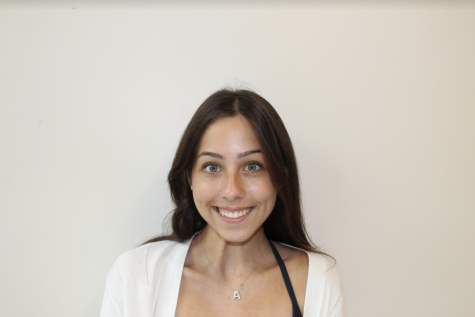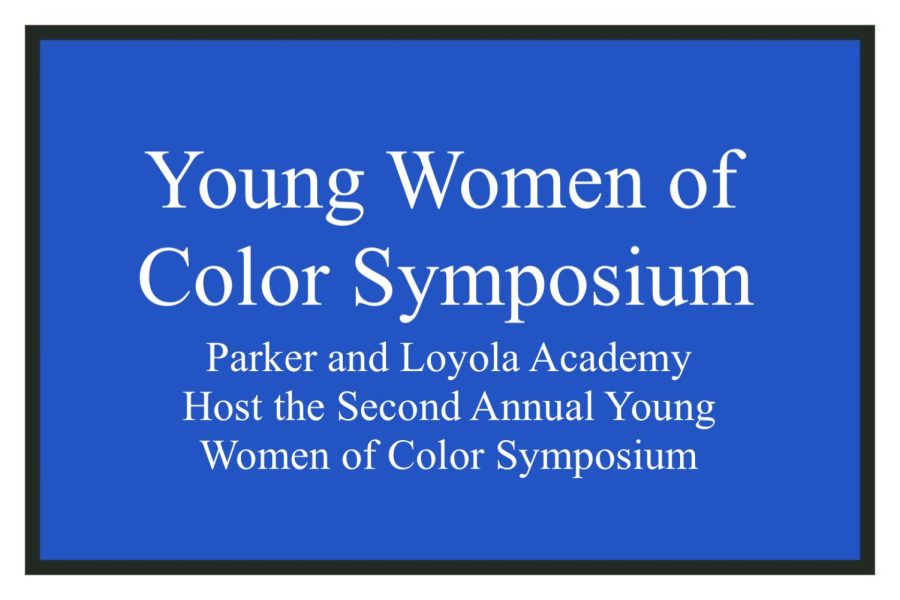Young Women Of Color Symposium
Parker and Loyola Academy Host The Second Annual Young Women Of Color Symposium
Photo credit: The Parker Weekly
Parker and Loyola Academy Host The Second Annual Young Women Of Color Symposium
On the morning of March 5, the Loyola Academy gymnasium was full of festive music and elegant movement. In vibrant costumes, Ballet Folklorico de Chicago dancers spun across the gymnasium floor, performing a showcase of lively routines. Their audience consisted of young girls, all dressed in bright pink t-shirts, watching the spectacle in awe. The Young Women Of Color Symposium (YWOCS) featured a host of performances that inspired girls from across the Chicagoland area.
The YWOCS took place on Saturday, March 12 from 8:30 a.m. – 1:45 p.m. at Loyola Academy in Wilmette, Illinois. Parker, along with Loyola Academy, organized the symposium. The two schools switch yearly in hosting the event’s location. From across the Chicagoland area, identifying girls of color were invited to engage in workshops and affinity sessions, listen to reputable presenters, and watch culturally-inspired performances.
“Everyone who went to the symposium was ready to talk and listen, which is really important in creating that safe atmosphere where students felt comfortable sharing their experiences,” Parker junior and YWOCS committee member Litzy Tafolla said. “It was a really healthy process for a lot of us to be able to let go of a lot of the tension that we’re forced to keep in in a predominantly white institution.”
Last year, the first annual YWOCS took place on Zoom. To join affinity sessions and workshops, girls had to join separate Zoom rooms. Technical complications were vast, making the experience difficult to navigate for organizers and attendees. Senior and YWOCS Committee Member Blessed Barrios compared the two symposiums.
“It was well organized for it being the first time in person,” Barrios said. “The one over Zoom was chaotic. This year it felt more organized and structured. There can obviously be more changes and improvements, but it was way better than last year.”
At 9:20 a.m., the girls welcomed keynote speaker Rosetta Lee, diversity speaker and trainer on several topics such as cross-cultural communication, identity development, and prejudice reduction. Lee was the co-chair of the 2005 NAIS People of Color Conference. Her keynote address specifically discussed navigating microaggressions.
Senior at Loyola Academy and YWOCS Committee Member Monique Robinson had several takeaways from the address.
“Everyone messes up, but it’s what you do after you mess up, what can you do to make up for it, what can you do to better handle that situation,” Robinson said. “How can we navigate this so it doesn’t happen as much? I think it’s a part of being accountable for owning up to your mistakes.”
Barrios mentioned a striking point during Lee’s speech, “Sometimes it isn’t up to you as a minority to educate other people,” Barrios said. “It’s not always up to you to be the encyclopedia and teach other people. That can be draining physically, mentally, and spiritually. That stuck out to me.”
During the symposium, three culturally inspired performances were held. At 8:30 a.m., dancers from dance company Ballet Folklorico De Chicago showcased mesmeric routines. Ballet Folklorico is a traditional Spanish dance that features movement, costumes, and music of Mexican folklore. Barrios described the performance as “amazing.”
Tafolla and Parker senior and committee member Chelsea Njei were two of three Parker attendees that performed slam poetry. The message was how to handle frequent mispronunciation of names and despite this, to stand strong behind your character. Barrios described the Parker performance as “life changing” and “heartwarming”.
“It just made me feel proud to have my name, to never let anyone mispronounce it, and to not let that diminish my character,” Robinson said. “I thought it was very powerful and other young girls who have different names who are not the “European white sounding names” felt heard at that moment.”
Loyola Academy’s step team performed a routine to the song “Run The World (Girls)” by Beyoncé. Stepping is an African dance that involves using the dancer’s entire body to produce rhythms and sounds. It combines elements of chanting, clapping, and singing. Barrios noted the performance was about “women empowerment and unity.”
Robinson commended the step team’s progress, “I really appreciated how far they’ve come along because I know the step team didn’t have that many people at first, but now, they have a lot more people,” Robinson said. “It just shows that women of color are being more embraced for who they are and they’re doing things that they want to do and not feeling like they shouldn’t be able to.”
Throughout the day, the symposium provided exclusive affinity sessions for girls to engage and connect. Affinity sessions included a room for latina identifying girls, a room for biracial girls, and a room for black-identifying girls. The space was intended for girls to relate, air grievances, and rely on one another.
“I was in the black affinity session and the space they provided was one of serenity,” Robinson said. “I would describe it as a breath of fresh air. To step into a room and know that you belong and that other women hear you and see you without you even having to speak and it’s so powerful.”
Barrios recalled feeling “heard, inspired, and motivated” during affinity sessions.
“A lot of us including me were a bit timid to speak up,” Barrios said. “After a while we realized that a lot of us shared the same experiences and we felt a sense of familiarity with these girls. We share the same struggles and validate each other’s struggles as well. After the affinity group I feel like I gained a sisterhood. I felt seen, heard, and loved.”
The symposium also held workshops for attendees such as financial care, literacy, and daughterhood. Njei described the discussion in the daughterhood workshop.
“A lot of times you hear women are supposed to cook, clean, care for their husband,” Njei said. “We talked about how we’re trying to break that narrative to see that you are a woman and you can do whatever you put your mind to. Sometimes being a daughter is hard because your parents or your mom enforce those stereotypes on you.”
Reflecting on the entire experience, Barrios felt a “sense of unity and liberation.” She described lacking representation growing up because it was rare to see a black woman or woman of color positively portrayed in the media. Additionally, it was rare for Robinson to find representation at Loyola Academy, a primarily white institution.
“Even though being a young woman of color in a predominantly white space is difficult and very challenging, don’t let your voice be silenced,” Njei said. “Speak out and act on what you want to see done and what you want to see happen at your school.”
Robinson described feeling “gratitude in the community I was longing for.”
“Women of color deserve a break, women of color deserve the space to take a step back, to relate, to love, to be loved! Because we’re not loved enough,” Robinson said. “This symposium gives girls the affirmation, the ability to be loved and to feel loved and that’s amazing for me. I would attend again a thousand times.”



